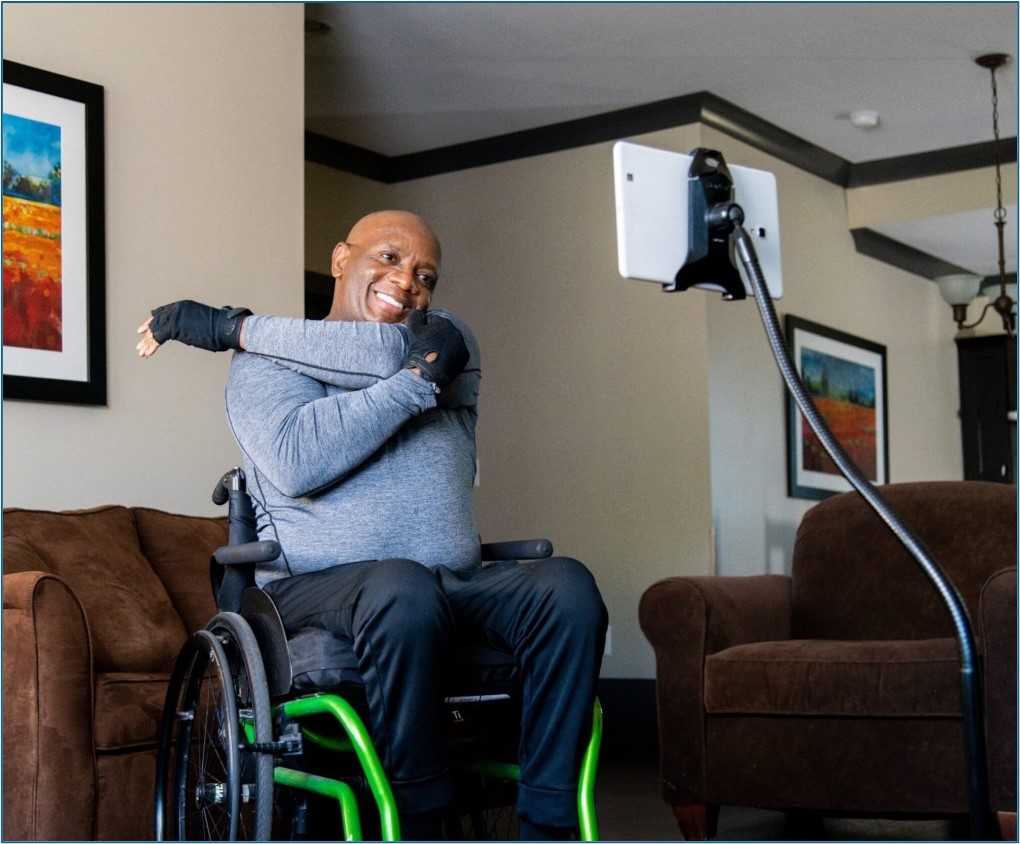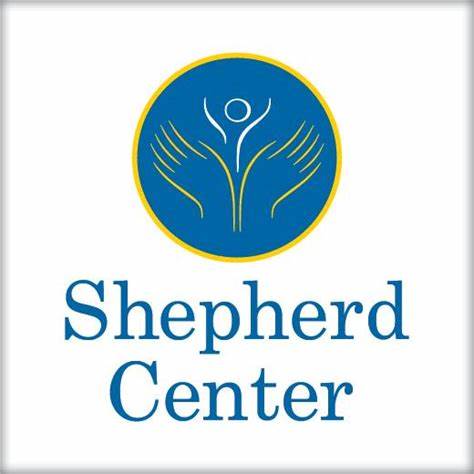Although cozying up in the home may be more feasible (and frankly more enjoyable) when faced with the inclement weather that winter brings, maintaining functional levels of activity is essential during the cold months. Long term inactivity contributes to increased levels of pain, loss of muscle strength/tone, worsened cardiovascular fitness, and can also play a large role in the prevalence of seasonal affective disorder. For individuals with SCIs, these consequences are typically heightened due to previous mobility limitations and can create secondary risks for pressure sores, spasticity, and impaired bone health.
Luckily, increased awareness about the importance of year-round exercise has led to the development of many at-home programs that have been made accessible for a wide range of physical abilities, schedules, goals, and of course, winter climates. This article will highlight three options, all in different mediums, that may be of particular interest to those living with a spinal cord injury.
MENTOR: Mindfulness, Exercise & Nutrition to Optimize Resilience

The MENTOR program, launched in 2012, is a virtual, 8-week program focused on a holistic approach to health from the National Center on Health, Physical Activity and Disability (NCHPAD). Participants receive customized exercise equipment in the mail along with connections to a fitness trainer, health coach, dietician, and a mindfulness coach. The typical time commitment is about 5 hours a week, with time split between physical activity and
one-on-one sessions with health professionals to provide a multi-dimensional approach to each participant’s wellbeing. However, the program can be as intensive as the participant would like it to be.
Participation is completely free, with the only qualifying factors being age (18+), presence of a mobility limitation, and access to working internet on a smartphone, tablet, or computer. To complete an initial screening for the MENTOR program, scan the QR code provided.
With over 1000 individuals enrolled since its launch, the MENTOR program is a unique opportunity to maintain all aspects of one’s well-being without having to leave the house to do so, especially during the wintertime.
Shepherd Center YouTube Shorts
If the commitment to an official program sounds overwhelming, one self-guided alternative is online tutorial videos.
The Shepherd Center in Atlanta, Georgia has a comprehensive public YouTube channel with dozens of playlist options for general SCI exercise tips, target muscle groups, paraplegia vs. tetraplegia, assisted vs. solo activities, beginner vs. intermediate activities, etc. This information comes from a healthcare center specifically focused on neurological injuries, and the demos provided within each video are performed by individuals with SCIs per instruction from licensed PTs and OTs.

An important note about this option is that it does leave the responsibility of obtaining equipment and acknowledgement of any physical risk up to the user themselves. It may also require more trial-and-error and time commitment to find what exercise options work best for everyone, but it can be personalized for SCI classifications in comparison to one-size-fits-all mobility limitation programs.
The Shepherd Center is available on YouTube at @ShepherdCenter, and the included QR code will also provide navigation to the channel. All that is required to access this content is a capable device and internet connection.
Flint Rehab Exercise eBook

There are also a wide range of eBooks/printable PDFs available online if video media is not appealing or available. This medium is quite simple, providing only text and photo descriptions of potential stretches and exercises, but it is advantageously more targeted to SCIs and specific injury types. Planning guides also properly address some of the most difficult portions of at-home exercise: motivation and developing a routine.
Flint Rehab Center provides a free online eBook with a combination of mobility, strength, and stretching exercises specifically meant to address neuroplasticity and maintenance of muscle tone during SCI recovery. This eBook can be accessed using the QR code and a working email address.
The important thing to remember about at home exercise, especially for SCI related goals, is that everyone’s desired outcomes and functional abilities are different. Developing an adequate plan will look different for each person, but regardless of exercise intensity, duration, and form, any level of regular activity will help maintain mental and physical health during the winter to some degree.
